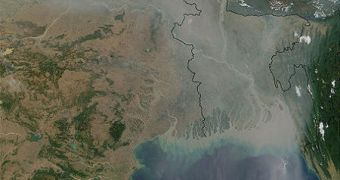Researchers at the University of Michigan, in the United States, demonstrate in a new study that the impact aerosols have on Earth's climate patterns has been severely underestimated in past researches.
Aerosols are liquid or solid particles that float in the air. Most commonly, they are made out of carbon or sulfur compounds, and play a role in the formation of clouds. Studies have focused on analyzing these particles, but it would seem that their effects were never actually understood in detail.
U-M investigators discovered that aerosol concentrations in the atmosphere have a tendency to cover the actual effects that global warming produces on the world. In fact, the uncertainty related to climate change is mostly caused by aerosols.
Investigating the correlation has been stifled by the fact that NASA missions dedicated to doing so have failed during launch. What the team showed is that, even if the missions launched successfully, satellite-based projections would underestimate the impacts of suspended particles.
Details of the study appear in the August 1 early online issue of the esteemed journal Proceedings of the National Academy of Sciences (PNAS). Understanding aerosols could help experts refine models seeking to explain how the world's climate will evolve over the next decades.
Depending on how much aerosols cool the Earth – via producing new clouds – temperatures may increase between under 2 to over 3 degrees Celsius until 2100. Catastrophic climate changes can be expected once the world reaches the 2-degree tipping point.
“The satellite estimates are way too small. There are things about the global model that should fit the satellite data but don't, so I won't argue that the models necessarily are correct,” says Joyce Penner.
“But we've explained why satellite estimates and the models are so different,” adds the expert, who is the Ralph J. Cicerone Distinguished University Professor of Atmospheric Science at the U-M.
“We found that using satellite data to try to infer how much radiation is reflected today compared to the amount reflected in the pollution-free preindustrial atmosphere is very inaccurate,” Penner explains.
“If one uses the relationship between aerosol optical depth – essentially a measure of the thickness of the aerosols – and droplet number from satellites, then one can get the wrong answer by a factor of three to six,” the investigator says.
In the next stage of research, the U-M team plans to work towards generating better climate models. This is absolutely necessary in order to inform public policy decisions, which need to be taken in order to ensure the climate tipping point is not reached.
“If the large uncertainty in this forcing remains, then we will never reduce the range of projected changes in climate below the current range,” the team leader concludes.

 14 DAY TRIAL //
14 DAY TRIAL //